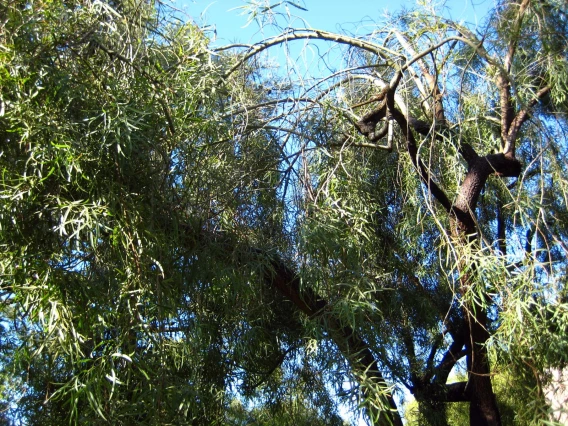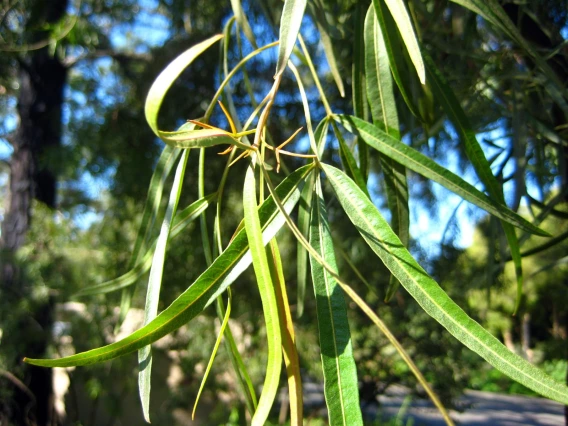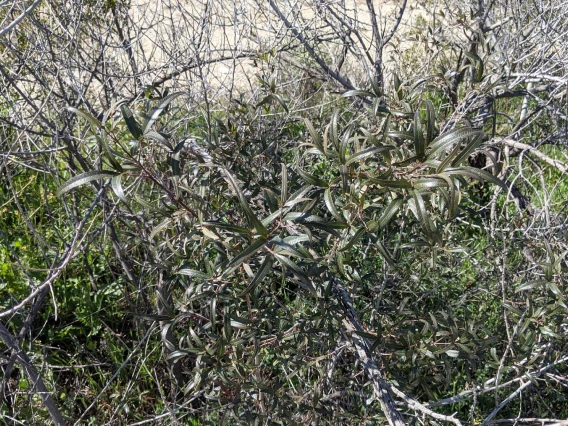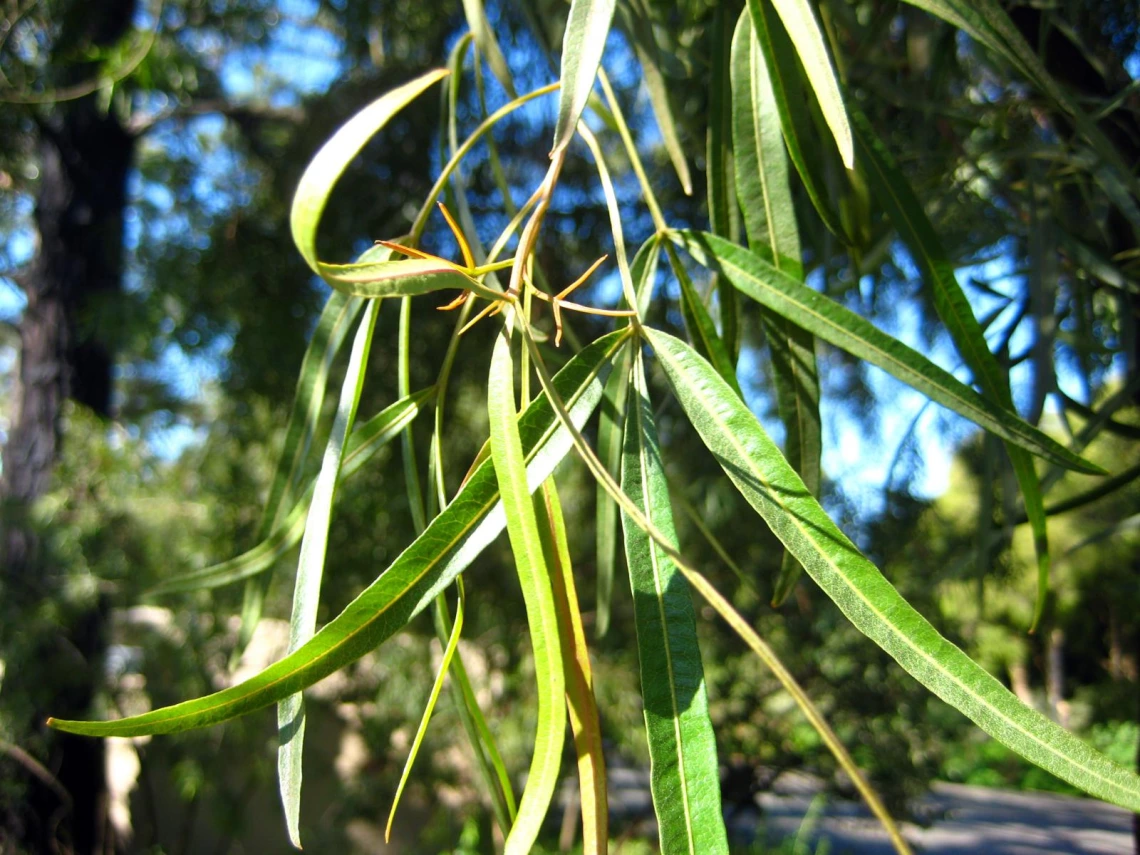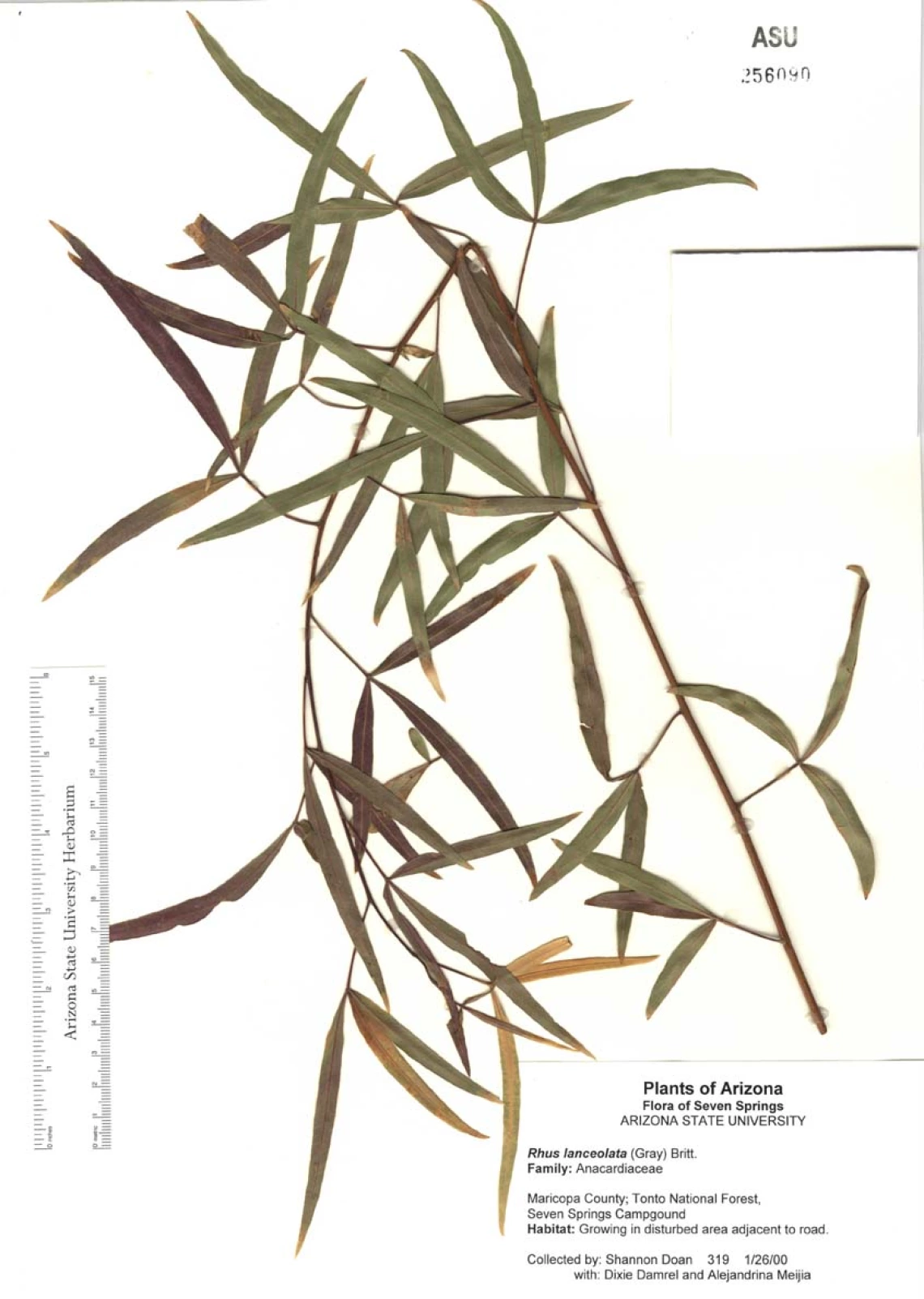Image

Bri Weidon
Common Name(s)
African sumac
Willow rhus
Karee
Scientific Name
Rhus lancea
Family
Cashew family (Anacardiaceae)
Reasons for concern
African sumac grows in riparian areas and can harm them by diverting channel flow, which increases risk for disruptive erosion. They also compete with native plants, like mesquite for water using their extensive root system. This tree grows quickly, and thus is difficult to control once established. They also drop many leaves continuously throughout the year and cause allergies.
Botanical description
Leaves
Evergreen, 4-10 cm long, 0.5-1.0 cm wide, leathery texture, dark shiny green above, pale-green beneath leaves in groups of 3
Stem(s)
The main trunk can grow up to 10 m long and has dark gray bark. Younger branches and twigs are thinner and can be reddish in color.
Flowers
Yellow green to pale green, 2-3 mm long, flower during summer months.
Fruit
Clusters of 5 mm diameter wrinkly tan or red colored, spherical, fruit during fall months.
Native to
Southern Africa
Where it grows
Riparian areas, urban areas, tolerant of alkaline soil, partial shade
Lifecycle
Perennial
Reproduction
Seeds germinate very easily as long as they have access to a seasonal water source
Weedy Characteristics
Seeds spread and germinate easily. African sumac out compete native species easily
Look-alike Plants
Desert willow (Chilopsis linearis) can be distinguished by its funnel shaped pink and purple flowers. Their leaves are similar shape to African sumac, but they are not grouped in 3s.
Control Strategies
Choose native trees like velvet mesquite for landscaping. Younger trees can be removed manually
References
- https://www.fireflyforest.com/flowers/3647/rhus-lancea-african-sumac/
- https://swbiodiversity.org/seinet/taxa/index.php?taxon=Rhus+lancea+&formsubmit=Search+Terms
- https://www.aznps.com/invasives/GrowNative/main_pages/african_sumac.htm
- https://www.public.asu.edu/~camartin/plants/Plant%20html%20files/searsialancea.html
- https://selectree.calpoly.edu/tree-detail/1284

